 In revealing her anxieties about public speaking, Nan Hutton, in Walkabout, September 1965, expresses my sentiments in approaching a presentation today, it being eight or more years since I last delivered a lecture; “It is all very well to have a chat to my typewriter [in my case an old iMac] who is a sturdy reliable girl, never stammering, never losing her notes, never straying from the point…”
In revealing her anxieties about public speaking, Nan Hutton, in Walkabout, September 1965, expresses my sentiments in approaching a presentation today, it being eight or more years since I last delivered a lecture; “It is all very well to have a chat to my typewriter [in my case an old iMac] who is a sturdy reliable girl, never stammering, never losing her notes, never straying from the point…”
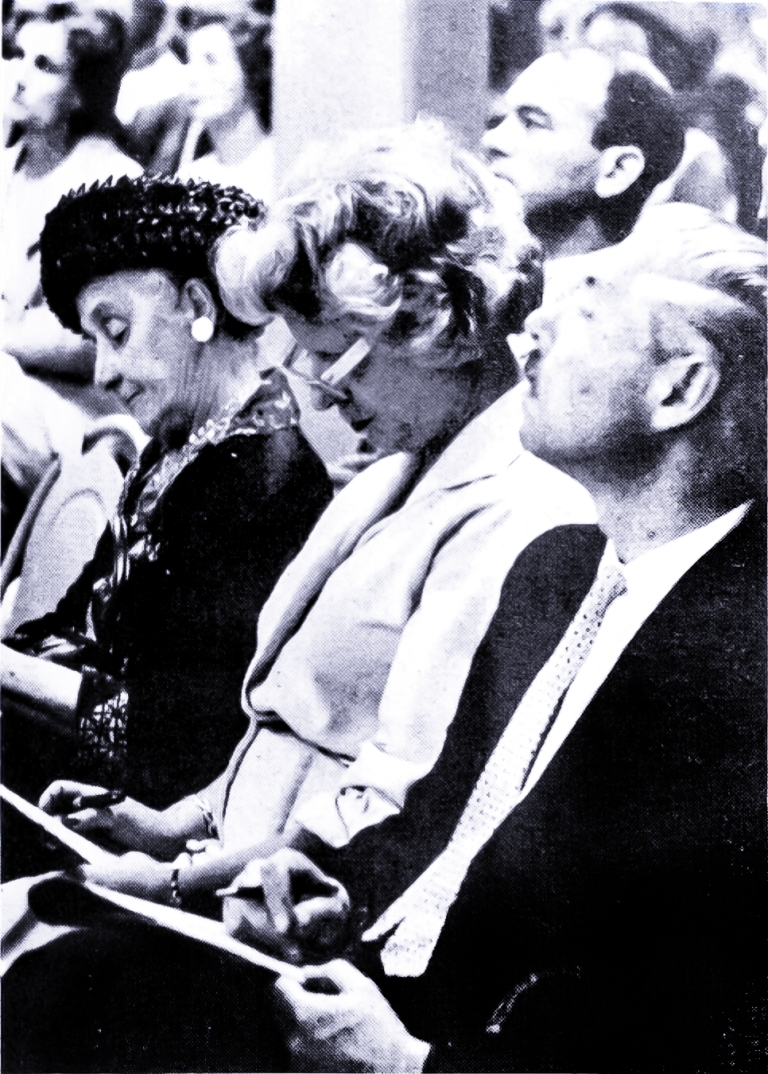
I am to speak to any who will listen among the audience of the World Press Photo exhibition at MAGNET galleries at Southbank, Melbourne.
Founders Michael and Suzanne Silver have been preparing their space for WPP over more than a year now, interrupted by COVID in 2021. They have achieved a coup in attracting this international display of the best in world press photography to Melbourne for the first time ever.
In turn, I feel a responsibility to rise to their ambition and give credit to their achievement. It crowns that of their sustaining a photography space, MAGNET —previously Photonet Gallery in Fairfield — for more than a decade since January 2009, shifting it to 640 Bourke St., before settling at Southbank where the organisation does so much.
I first encountered Michael and Suzanne when I was included in their show of retrospective and current work of the 1970s of Prahran College alumni. Following that, Phil Quirk and others have been promoting the idea of an extension of that show which will evidence the perseverance and productivity of those same photographers who are now approaching, or are past, seventy and still creatively making pictures. They include Robert Ashton, Andrew Chapman, Bill Henson, Rod McNicol, Peter Milne, Jim McFarlane, Glen O’Malley, Mimmo Cozzolino, Graham Howe, Greg Neville, Vicki Petherbridge, Jacqueline Mitelman, Ross Bird, Ashley Mackevicius, to name a few. It will pay suitable tribute to the lecturers, Athol Shmith, John Cato and Paul Cox who set these ‘shining lights’ on careers in the medium and also those, like Carol Jerrems, who died young.
The proposed show acknowledges that the seventies are accepted in the international history of our medium as the decade in which it was internationally accepted into the gallery as an artform on its own terms, not merely a monochrome, though artfully toned, imitation of painting as Pictorialism had been until mid-century.
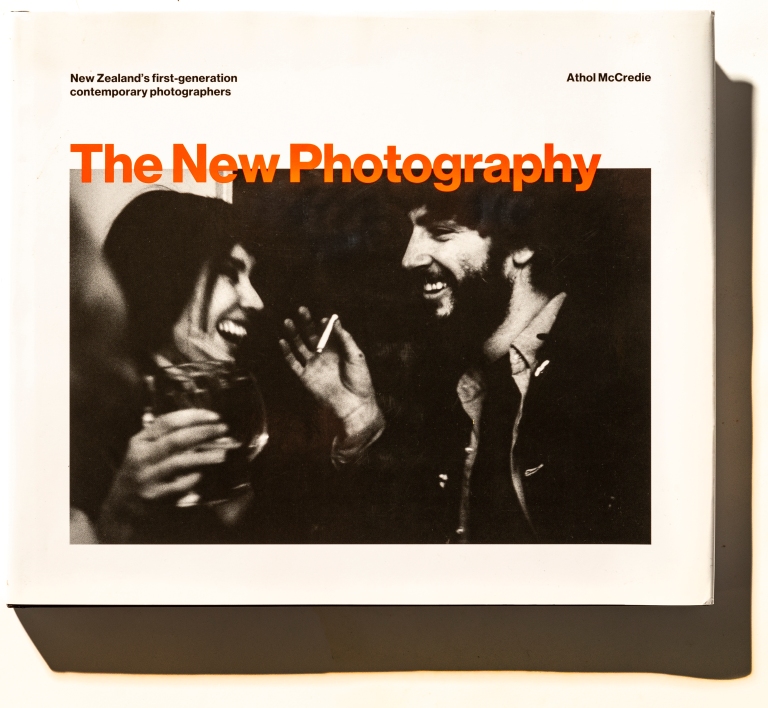
It has taken researchers like Athol McCredie in New Zealand in his 2019 publication The New Photography, and Daniel Palmer and Martyn Jolly here in Australia, in their Installation View of last year, to reevaluate this perception of a spontaneous 1970s flowering by demonstrating that the genesis of ‘straight photography as art’ happened in the 1960s.
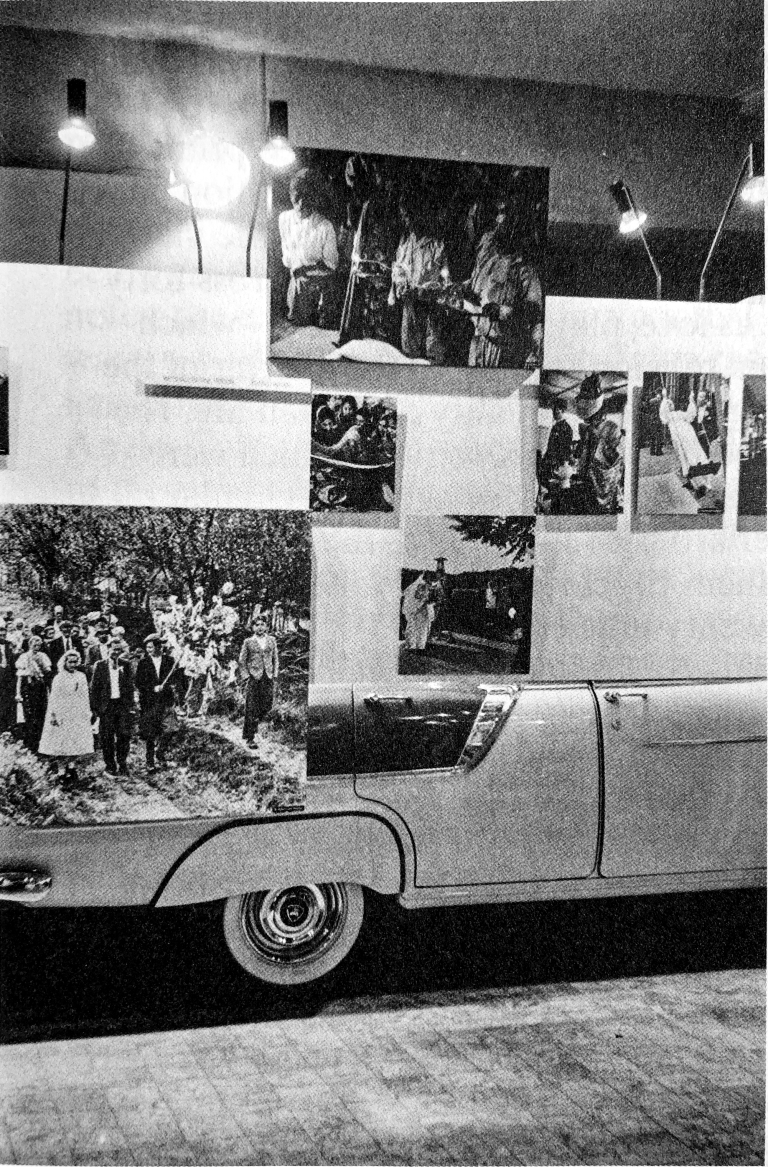
A formative stimulus dates even earlier, from 1955, in The Family of Man which exhibited in Australia during 1959; in Melbourne, at Preston Motors Show Room, from February 23; in Sydney, at David Jones Department Store, from April 6; in Brisbane, in John Hicks Showrooms, over May 18–June 13; finishing in Adelaide’s Myer Emporium, June 29–July 31, 1959. Such were the spaces required to show of 503 photographs from 68 countries chosen by Edward Steichen, the director of MoMA’s Department of Photography
By their own account seeing the exhibition was influential on Australians Graham McCarter, Robert McFarlane and John Williams; and on Prahran lecturers John Cato and Paul Cox; also on New Zealanders Ans Westra and Marti Friedlander who saw only the catalogue, since New Zealand was among the very few landforms not visited by the exhibition which was seen by 9 million visitors worldwide.
The Family of Man is also cited as a significant influence on Melbourne’s Group M (founded in 1955) seen at Michael and Suzanne’s Photonet in the 2010 retrospective gathered from the archives of Albert Brown, who wrote to photographic historian Helmut Gernsheim: “You seem to entirely agree with me that documentation is the most important function of photography today.”
We stand on the other side of a postmodern Foucauldean critique which discredited the documentary ‘realist’ image as a univocal colonising surveillance. In fact in this revisitation of the 1960s I propose that we can discern distinct strands of realism, which thread more intensely hued, through world press photography in this show.
That press photography is itself currently under existential threat we will hear from its practitoners themselves as they speak in this series of talks here at WPP on causes and antagonists. That, I hope to put into relief against an earlier peril encountered by our medium during the 1960s. Here it is in this family portrait.
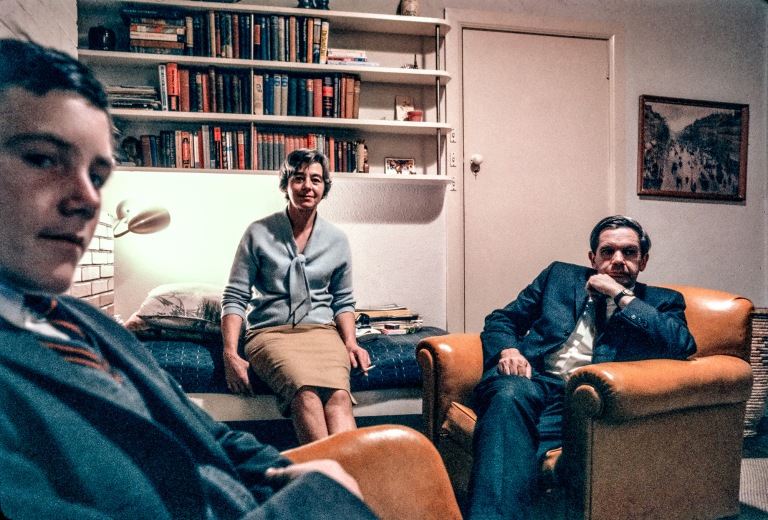
An experiment here (that’s me on the left) with the self-timer and a long exposure on tungsten-balanced High Speed Ektachrome (ISO 160) in the Nikon S3 rangefinder my father (on the right) generously allowed me to use, to the bemusement of my mother (centre) shows us sitting, passively engaging the enemy; our new television that father installed in our lounge room after my pestering and that of my younger sister and brother (not in the picture). His insistence that we wait for colour TV before buying one was futile.
As you see, I’m presenting a personal story here as much as filling in a neglected history. My father was Brian De Largie McArdle who sometimes signified his first name with the initial J, having been christened James, before passing the name on to me, which was that of his grandfather, and also his father, a journalist who migrated here from Glasgow and married the daughter of Senator Hugh De Largie. In this photograph, he has been the first full-time editor of Walkabout magazine for around 5 years. Prior to that, he worked on the Geelong Advertiser, then 1951-56 at The Age, where he took over Bruce Grant’s film review column.

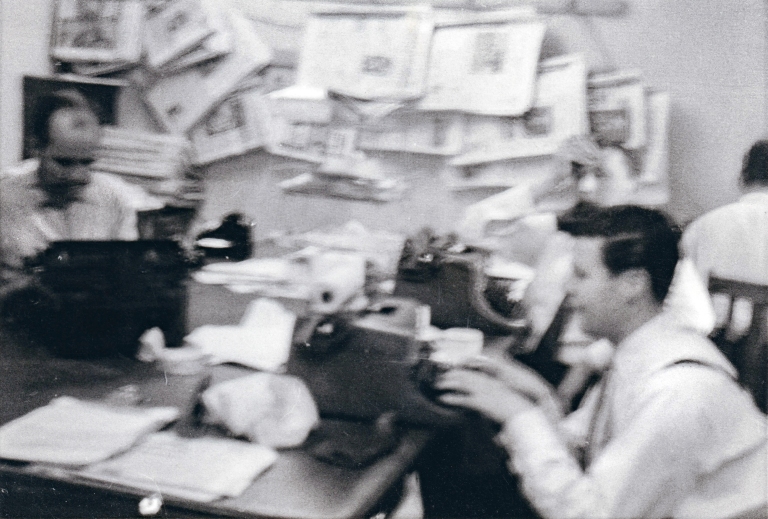
Then in 1956 took the family to London to work for Radio Australia and in Fleet Street.

In 1957 to augment his funds for returning to Australia he wrote a detective novel Flashpoint for Treason under the pseudonym Desmond Reid for the Sexton Blake crime fiction Library, boasting that it was he who “put the sex into Sexton Blake.”
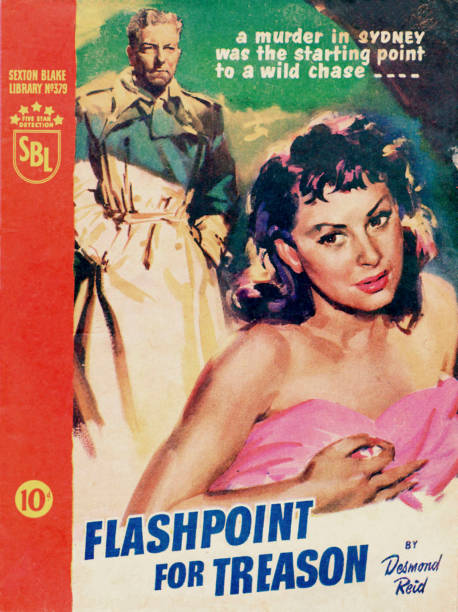
Its ‘wild chase’ starts in Sydney, crosses the border into Victoria, romps through Bendigo and down the Calder highway into Melbourne. He was a stickler for correct grammar — his Fowler’s English Usage was much thumbed — and he firmly believed an editor or writer could only do the job well by reading as much of trashy literature as of the classy, and in this paperback he profitably adapts.
The rest of the family, whom he’d left behind, likewise chased him back home in 1958 by which time, though completely self-taught in photography, he had set up as a “photo-journalist” moonlighting on his job at Radio Australia in Melbourne. He started with the Nikon S rangefinders before upgrading to the newly released reflex model F and was ever a champion of the 35mm format.
 He formed a business partnership with wife Marie in July 1960, selling pictures of factories, markets, farms and town and scenic views to ANTA, government departments of Trade and Immigration, The Bulletin and others. Seven of his pictures from this period are in the National Archives.
He formed a business partnership with wife Marie in July 1960, selling pictures of factories, markets, farms and town and scenic views to ANTA, government departments of Trade and Immigration, The Bulletin and others. Seven of his pictures from this period are in the National Archives.
The term ‘photo-journalist’ came into general use surprisingly late, even though magazines, beginning with the German and French publications, were innovating illustration-centric layouts in the 1920s.
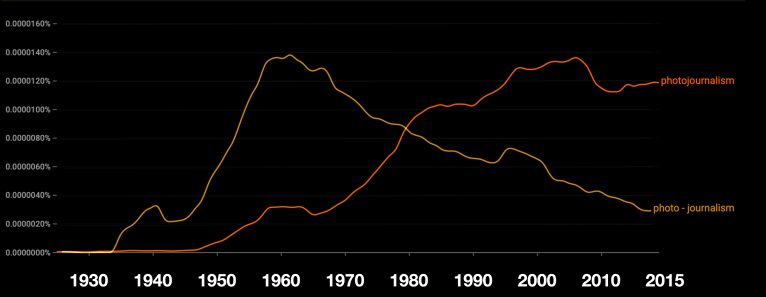
According to Kathryn Evans‘ 2001 research it was not in general use in Australia until the 1960s (Evans, K. 2001, ‘Still: A Cultural History of Press Photography in Australia’, PhD thesis, University of Technology, Sydney: p.27).
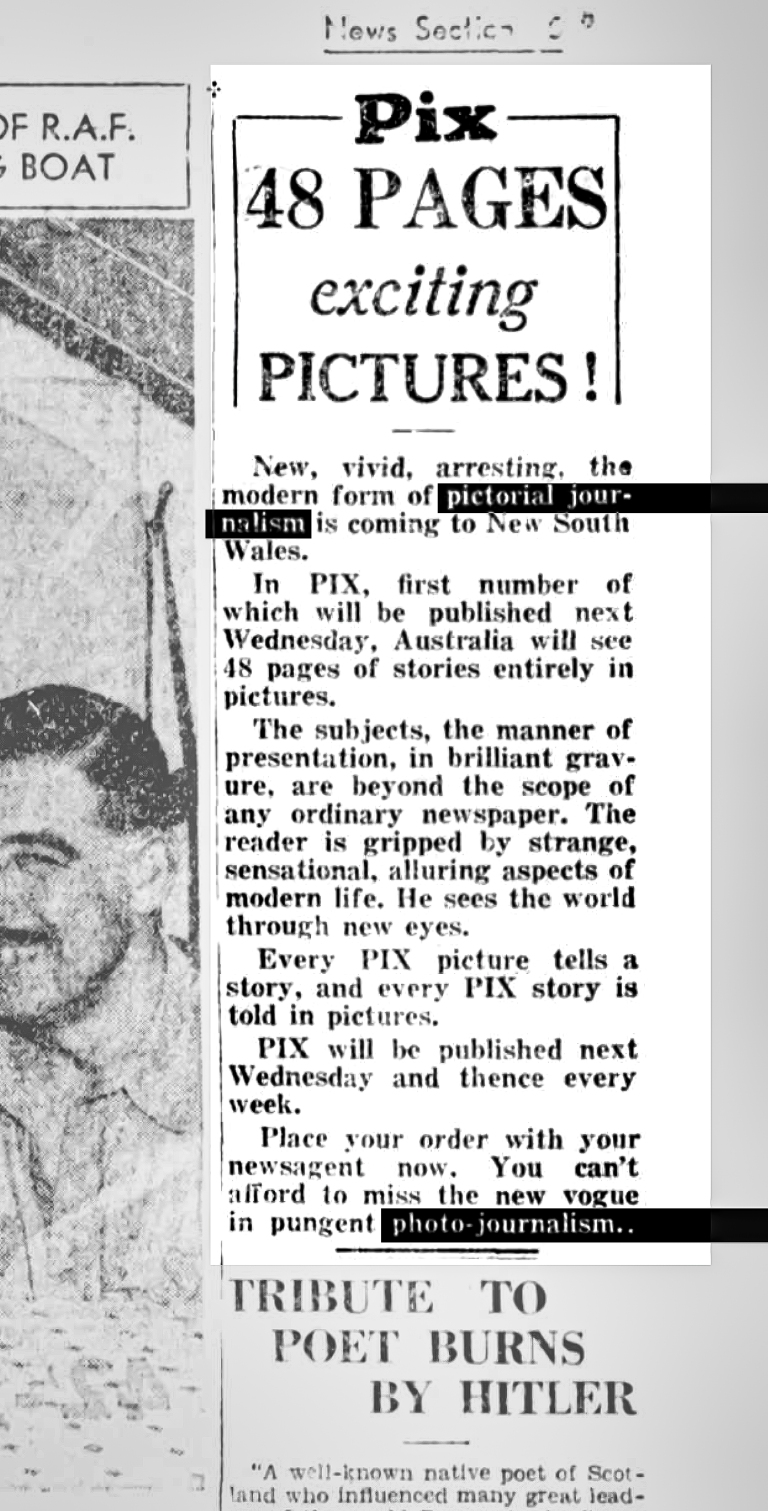
When Brian’s freelance photography first appeared in an illustrated article in Walkabout on Melbourne’s shopping arcades in June 1960, he was credited as a ‘photographer-journalist’ by then editor Graham Tucker.
Did Brian’s photojournalism secure him his editorship of Walkabout magazine, his application eased via the many contacts he had made during his years in the press? He became the magazine’s first full-time editor.
If you haven’t heard of it, I’m afraid you won’t find Walkabout mentioned in Fay Anderson’s Shooting the picture : press photography in Australia of 2016, though she gives it brief mention as combining “cultural, geographic and scientific content with travel literature” in her earlier paper “Chasing the Pictures: Press and Magazine Photography” (Media International Australia, 2/2014 p.47-55).
A major publication Travelling Home, Walkabout Magazine and Mid-Twentieth-Century Australia appeared in 2016, jointly authored by Mitchell Rolls and Anna Johnston, of the Universities of Queensland and Tasmania, and it followed Rolls’ 2013 paper “Flora, Fauna and Concrete: Nature and Development in Walkabout Magazine (Australia: 1934-1978),” in the Journal of Australian Studies. Johnston is prolific in her publications and her research emphasis is on writing by which she classifies the magazine as ‘middlebrow.’ Previously Rolls in 2009 produced ‘Picture Imperfect: Re-reading Imagery of Aborigines in Walkabout,’ in which he confirms that;
“…in comparison with National Geographic only a small number of scholars have considered Walkabout. Their focus is usually on the magazine’s representations of specific subjects of interest, or its role in the history of Australian tourism,”
and he contends in regard to a central interest, Walkabout‘s depiction of Aborigines, that most, including even Aboriginal academic Lynette Russell, unquestioningly apply in their interpretations the cultural studies theory of Catherine Lutz and Jane Collins in their 1993 Reading National Geographic which concludes that the latter is complicit in supporting United States foreign policy and is a vehicle for capitalist and imperialist ideology. Hence the cover image selected for Travelling Home…
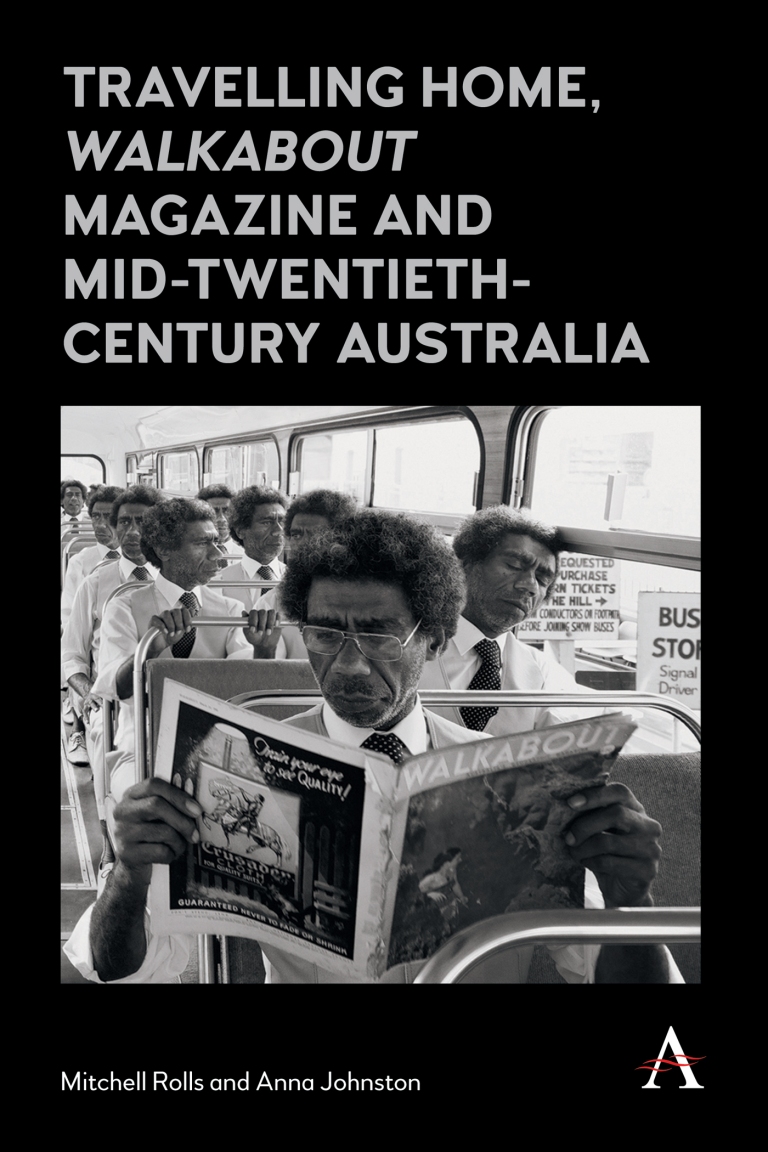
…which is from Michael Cook‘s freshly minted Majority Rule series of 2014 which supports Rolls position that;
“It is possible that Walkabout‘s readers too, amongst whom were Aborigines, were reading the photographs in disruptive ways. Confronted by imagery attesting to the continued presence of Aborigines and their humanity — a humanity eliciting both difference and sameness — Walkabout‘s readership had ample reason to see beyond the stereotypical motifs privileged by the critics [who] have not allowed for nuance [nor] countenanced the capacity for reader interpretation. Nor have they countenanced Aboriginal interests in photographs and photography. The possibility of Aboriginal agency in any of Walkabout‘s imagery is refused. These failures and refusals suggest a will to find a politics of representation, not a will to find and understand what range of views penetrated Walkabout‘s audience, or the audience’s responses to those views.”
Thus, consideration of the audience for photography, then, is vital since we are all photographers and all visually literate and alert to the way it positions us, for a fragment of time within a frame of reality, and we are all suspicious of its capacity to be manipulated, and to manipulate us. Even in the simpler times of the 1960s it was unwise to take one’s audience for granted, and ever more so now. As Lutz and Collins noted in 2003 of National Geographic survey results; 53% of its subscribers (let alone more casual readers) only look at the pictures and read only the captions.
What was the audience for Walkabout at the time he took its reins? Rolls in Travelling home dismisses the 1960s as “The Final Years”;
The post-war period saw an increase of articles on the arts – music, opera, ballet, for example – and even an article by the writer and journalist Nan Hutton on shopping, in an attempt to appeal to a wider urban readership, but these were more incidental inclusions than indicative of a sustained change of emphasis. For a brief period this broadening of subject matter might have been a factor in the increase in circulation in the early to mid- 1960s, but the rationale behind it was insufficiently developed or coherent in respect to thematic content to sustain any significant increase in readership for long.
In fact the increase in sales was considerable, at 65,000 copies it was 66% more than the 1958 figure of 30,000, sustained at nearly 50,000 until Brian’s last editions in 1968. Data on ‘circulation’ as such is not recorded so the ‘readership’ was broader still, and commentators repeat Johnston’s claim that Walkabout “was the kind of magazine people read in train station waiting rooms, at the doctor’s surgery, or when they visited a government office. People—ordinary readers and specialists—remember it very fondly as part of their childhood or their family or school library.”
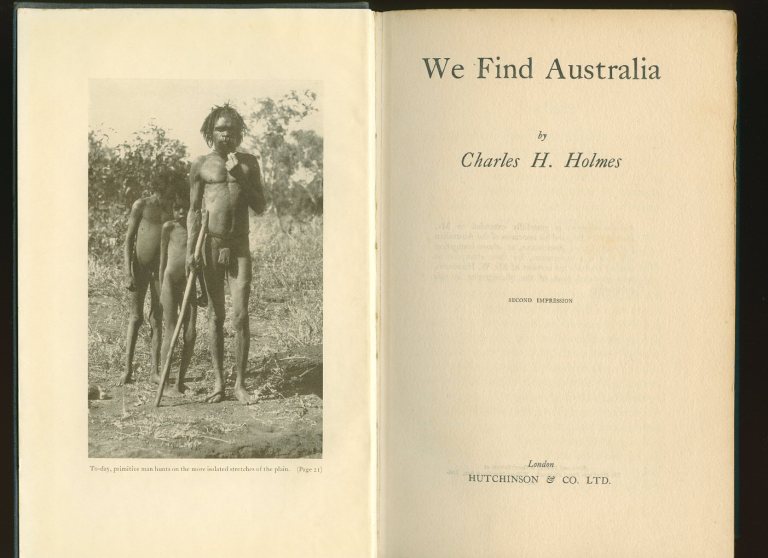
It is only by reading between the lines that it becomes clear that the task facing my father was to transform the magazine from its geographical and scientific specialisation into a publication with broader appeal; a radical change of direction had in fact been forced upon it because of the demise in 1961 of the Australian Geographical Society, for which since 1945, Walkabout had been the research journal, alongside Emu for the ornithologists for example, and simultaneously catering to cultural and tourism networks. Further, the first editor, until 1957 was Charles Holmes a Fellow of the Royal Geographical Society in London (RGS), advocate for the emerging discipline of modern geography as a stimulus in nation building and author of We Find Australia. Paul Magagnoli notes his influence on securing “contributions of geologists, agricultural experts, natural scientists, and anthropologists with university appointments featured in the magazine.”
However, the readership was not interested in dry scientific content and contributing scientists had to tailor their copy, removing Latin names and tempering jargon for a ‘middlebrow’ audience that they had inherited from the first ten years of the publication.
A survey in 1956 specifically of AGS readers of the magazine showed 93% favoured continuing to read natural history in ‘popular form’ but brought their criticism of the overemphasis on the inland and outback, causing the magazine to promise more articles on environs in which readers lived. Readers also called for colour photography, refused on the grounds of cost though colour covers were announced in December 1958, and in the same September issue alongside the analysis of the survey was a callout for photographs “featuring all aspects of Australia and particularly the out-of-doors” with five guineas being paid for cover illustrations. Five guineas equates to a $650 payment now; not quite up to that expected by contemporary photographers.


A ‘boomerang-style’ masthead banner was adopted in January 1959. Mimmo Cozzolino assures me it is hand-lettered, possibly by typographer John Ashenhurst, not an existing font. The magazine had moved its Melbourne bureau from the Railway Building, Flinders Street, Melbourne to the newly-constructed modernist Coates Building at 18 Collins Street in the ‘Paris end’, in October 1959. The relocation from a fusty 19th-century railway station to offices behind curtain glass facade reflecting the most chic quarter of the city represented a change of outlook in ethos as much as optical.
Hired as the first full-time editor in which capacity his name first appears in the April 1961 issue, Brian knew he had to understand his audience and understood the primary importance of quality photography from the many letters praising its pictures that filled the ‘Mail Bag’ page. In a signed typewritten ‘Dear Reader’ letter reproduced full page in October 1961, he promised that “Pictorially, WALKABOUT will excel itself this Christmas by including a 24-page colour edition of ‘The Australian Scene”, which alone makes it an ideal gift…”
He had the magazine conduct a survey in November 1961 (thus excluding the AGS members who received free copies). It revealed that they visited remote regions only in very small numbers, with the magazine providing their vicarious experience of it, while 62% traveled ‘a little’ and mostly to New South Wales (including the ACT), Victoria, South Australia and Queensland. The masthead was changed for the November 1961 edition which displays Walkabout in a more solid and sophisticated Clarendon slab serif typeface.
Rolls’ perception of a rejection of imagery of ‘the bush’ and of First Nations peoples in favour of ‘urban’ subjects are belied by the covers dating 1961 and onward
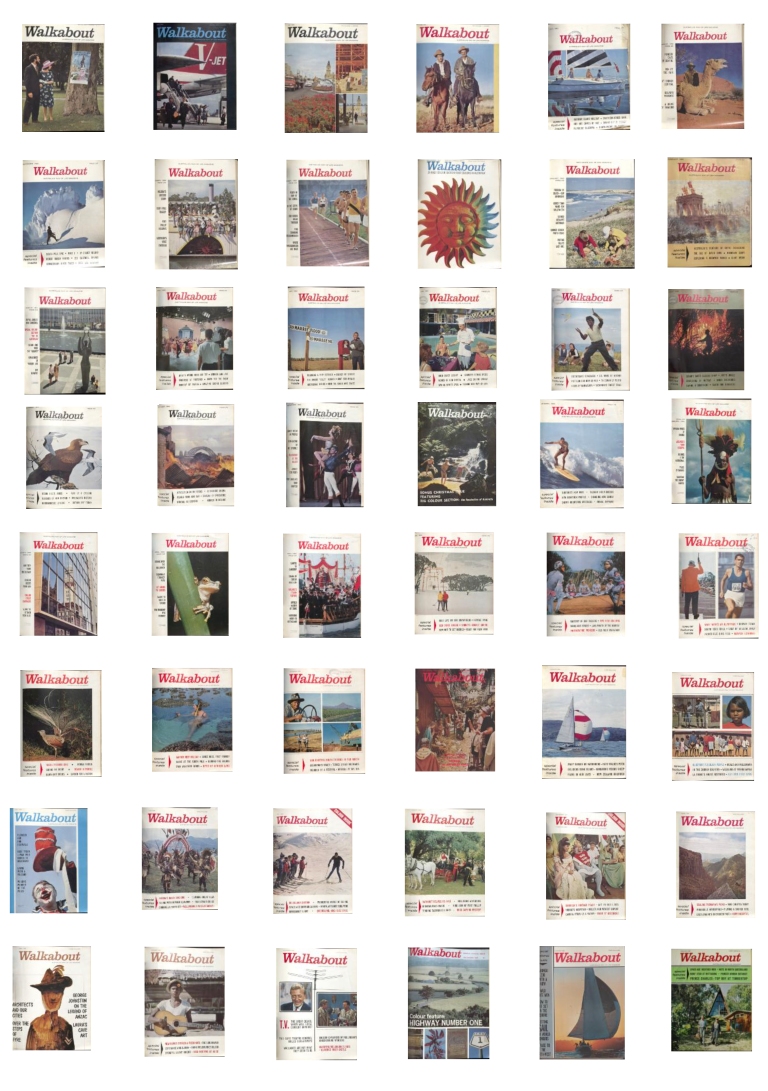
Many of the above covers are Brian’s own, and as colleague Peter Fenton noted “Many times I have seen him go out and take superb shots to illustrate an article whose contributor hadn’t been able to supply pictures,” but most often he sought talent from amongst the country’s most celebrated photographers, among them being; David Beal, Jeff and Mare Carter, Beverley Clifford, Gordon De Lisle, Max Dupain, Claudy and Harry Frauca, John Garrett, Heather George, Helmut Gritscher, Laurence Le Guay, Robert McFarlane, Ern McQuillan, Harry Mercer, David Moore, Lance Nelson, Graham Pizzey, Axel Poignant, Wolfgang Sievers, and Richard Woldendorp.
He was among good company, and in order to understand the new direction that Walkabout was taking requires contextualising the magazine in the 1960s. With the 15-year association with AGS gone with its demise, and with it the emphasis on the sciences of geography, geology, biology, botany and anthropology, it returned to its original purpose with the task of attracting tourists to and within the country. The masthead “Australian Geographical Magazine” was replaced with all-caps “AUSTRALIA’S WAY OF LIFE MAGAZINE” beneath the new Clarendon banner, also likely hand-drawn by Ashenhurst. ANTA was a non-government organisation of the tourist industry. It did not fund Walkabout; instead sales of the magazine funded ANTA and its many activities.
If I may take Rolls’ words to task here, so far from being “incidental inclusions,” these changes and the “broadening of subject matter” were “a change of emphasis,” that was indeed “sustained” and were actually a return to original purpose — the promotion of tourism — that it had served in its first 11 years, then in more than 15 of its last; they being a quarter of its existence, not “a brief period.” That demonstrably was “a factor in the increase in circulation”. The rationale behind it was not “insufficiently,” but highly, developed, honed by listening, through reader surveys of 1956 and 1961, and responding to readers’ letters to produce content that was “coherent.”
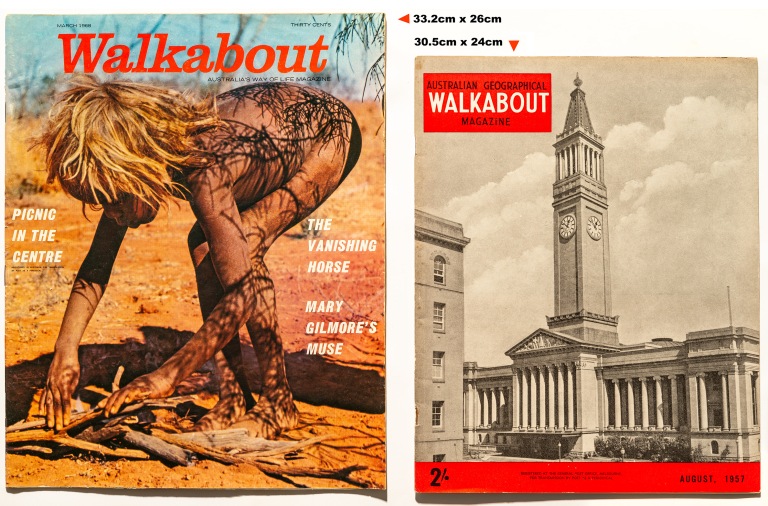
I contend that what made the magazine so popular in the 1960s, as evidenced by the substantially increased numbers of subscribers, was largely down to expertly crafted, bold, colourful and informative photographic imagery.
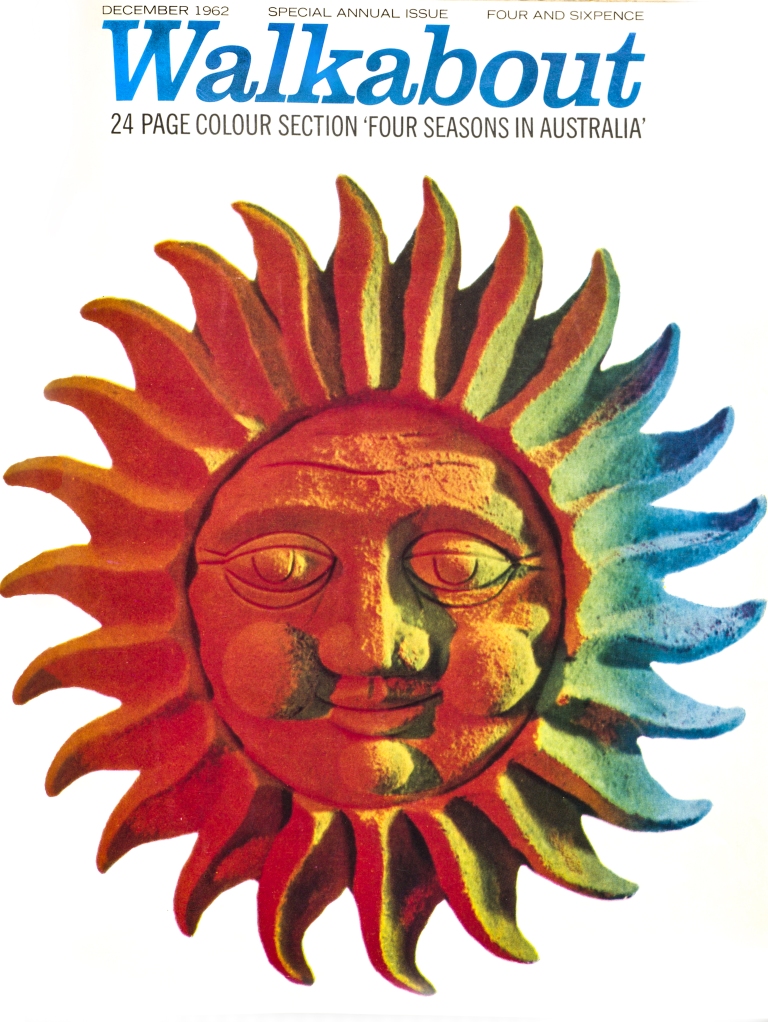
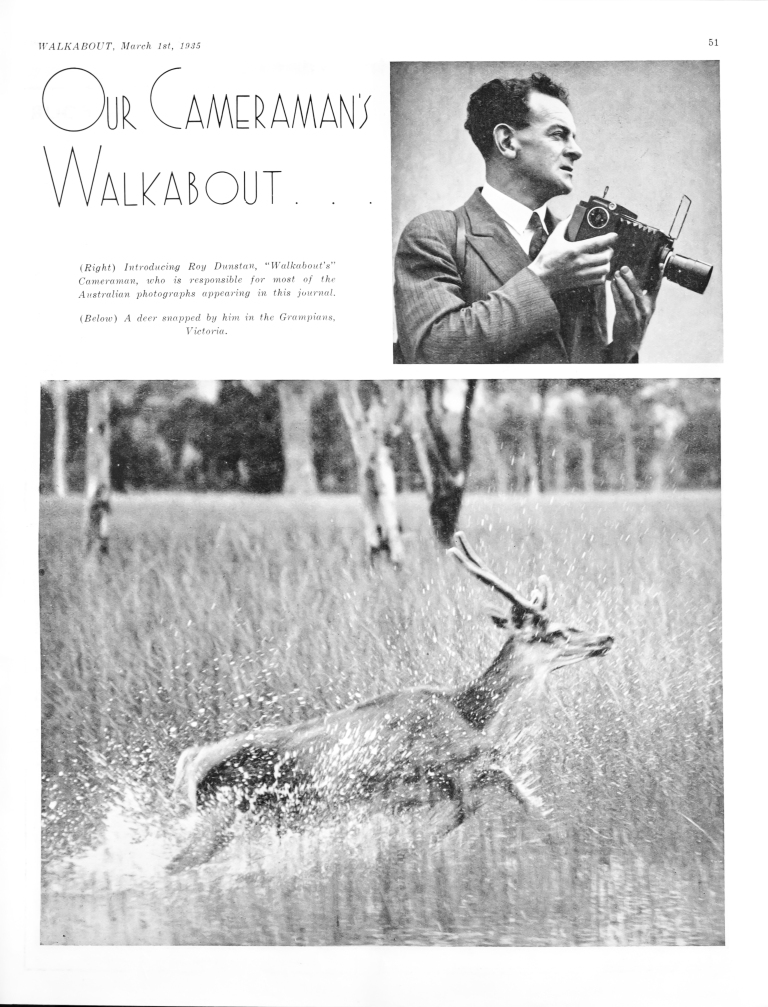
Photography was always a priority. At ANTA’s 16th meeting, in May 1934, a motion proposing that it publish a travel magazine was passed, and employment of a staff photographer approved, to provide, “quality … arresting pictures.” Subsequently Roy Dunstan, a Victorian Railways employee, was appointed and his work was augmented by others commissioned by the magazine.
Brian nurtured his stable of photographers, serving them juicy assignments and arranging them in layouts in which the fruits of their labours shone. The list I’ve already enumerated contains names you will know well, like David Moore whose work appeared regularly amongst that of long serving veterans Axel Poignant and Laurence Le Guay. David Beal is one who should be better known and his career trajectory runs in parallel with Brian’s editorship. First published in Walkabout was his small offering of pictures
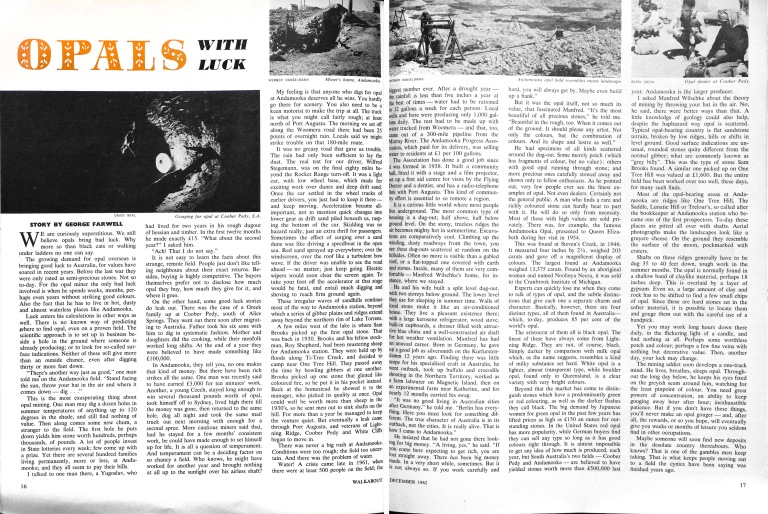
By the following year, Beal was freelancing and working as a stringer for The Sydney Morning Herald, and produced this extended picture story for the November issue. 


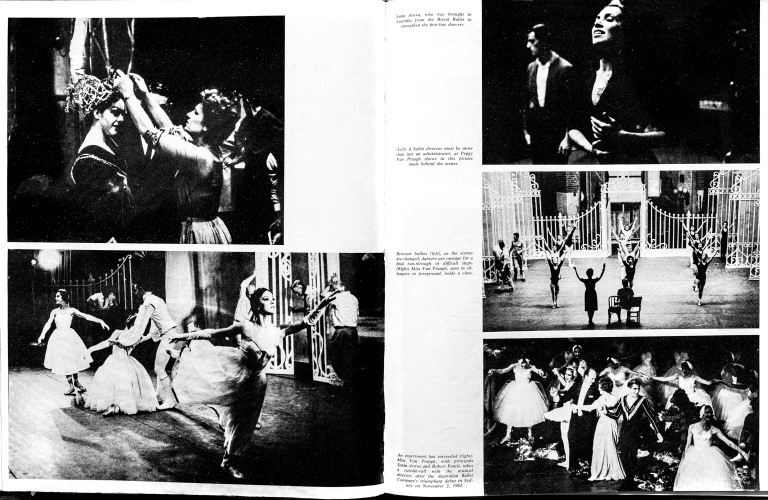
Photographing during rehearsals enabled him to make wry observations of the elision of fantasy and reality as dancers strike elegant poses while stage-hands lump props in the background. Beal went on to photograph in New Guinea for TIME, then in Europe for LIFE, Paris Match, and The Sunday Times before joining the Black Star agency.
Beal’s work featured also in The Bulletin, Pix, TV Week, and Woman’s Day among the magazines that were Walkabout‘s Australian competitors during the 1960s:
Pix first appeared in 1938 and merged with People in 1962, offering scandal, human-interest stories, politics and entertainment and and published by Associated Newspapers Limited in Sydney, Australia.;
Australian Women’s Weekly, founded in 1933, is still in production as a monthly magazine and remains one of Australia’s highest selling magazine;
The Australasian Post (1864–2002), the longest running weekly picture magazine in Australia;
Man magazine was a slightly risqué men’s magazine (1936–74);
New Idea – named in 1928 from a magazine started in 1902. Acquired by Murdoch post WW2.
The Bulletin – a literary publication until 1961, when it was bought by Australian Consolidated Press (ACP), merged with the Observer (another ACP publication), and shifted to a news magazine format with Donald Horne appointed as chief editor who quickly removed “Australia for the White Man” from the banner. It ran at a loss supported by Kerry Packer. It ran colour covers and centre spread.

 A number of ‘Australiana’ picture publications were appearing in a new format; the ‘coffee-table’ book. Visiting American photographer Robert B. Goodman set the benchmark. National Geographic assigned him to Australia for five months in 1962 to work on a major article, published in 1966 for which he recruited Jeff Carter, a frequent Walkabout contributor. Goodman conceived the idea of a big book on Australia, quit National Geographic, and during 1963 and 1964 shot The Australians with text by George Johnston who had just returned triumphant from years in Greece with his acclaimed new book My Brother Jack.
A number of ‘Australiana’ picture publications were appearing in a new format; the ‘coffee-table’ book. Visiting American photographer Robert B. Goodman set the benchmark. National Geographic assigned him to Australia for five months in 1962 to work on a major article, published in 1966 for which he recruited Jeff Carter, a frequent Walkabout contributor. Goodman conceived the idea of a big book on Australia, quit National Geographic, and during 1963 and 1964 shot The Australians with text by George Johnston who had just returned triumphant from years in Greece with his acclaimed new book My Brother Jack.
While shooting in Melbourne, Goodman bunked at our place. We heard him in the early hours whistling loudly (no one whistled at our place) and over breakfast told us he’d been testing his new Nikonos under the shower.


With Donald Horne, also author of The Lucky Country (1964), Beal produced Southern Exposure, an idiosyncratically ironic Australian response to Goodman’s flattery. Produced in monochrome and regrettably not to the high production standards of Adelaide publisher Rigby’s printer Griffin Press, it amplifies Horne’s acerbic social criticism, anti-monarchist and anti-British sentiments and his decrying of the treatment of indigenous Australians. Beal’s spread here relays the message of Robyn Boyd’s 1961 The Australian Ugliness, bludgeoning the reader with the barrel of his telephoto lens that squeezes into the frame the contending impacts of modernism; jet travel, popular magazines, gambling, car- and sun-worship, commodification of the young female body, fast food, urban clutter, and the commercialisation of amateur photography. Like the entire book, this picture is reproduced in monochrome, making the clutter of signs and texts clamour and compete more vehemently; “colour” writes Beal in a ‘Photographer’s Note’ is a “veneer,” black and white more “honest.”

At the end of the decade Beal joined David Moore to produce In The Making, presenting Australian creatives in an eye-popping, montage layout by the designer The Australians Harry Williamson and text by Craig McGregor whose People, Politics and Pop (1968) is an early Australian application of the subjective, immersive New Journalism. In The Making is an Aussie riposte to the 1965 British Private View by Antony Armstrong-Jones (Lord Snowdon), Bryan Robertson and John Russell, also published to the same format by Nelson in a bold but more conventional layout.

Children’s literature illustrated with photography is a phenomenon that developed after the Second World War despite the convention that dictates that children respond best to simplicity. An Australian example though, dates earlier, from 1922; it is by Les Chandler, naturalist and ecologist contributor to Walkabout and whose work was exhibited at MAGNET in 2021, who produced Jacky the Butcher Bird with his own photographs.

Having just produced his first children’s book Sir Charles and the lyrebird illustrating a story by Joyce Nicholson, Brian traveled with Stan Marks to photograph around Alice Springs and the Centre for the Children Everywhere series, and after some research found Graham, a boy whose life spanned both traditional and modern lifestyles. All the illustrations for the book were shot in a few days around Friday, 28 October 1966 on 7 rolls of FP3 at 200 ASA (ISO) processed in ID11 1:1 for 8 minutes, according to his careful notes on the negative sleeves. They are now held, with his entire archive of 496 rolls of B&W (about 15,000 frames) and 2,235 colour transparencies, in the State Library of Victoria collection. The Library will make scans of them available online.
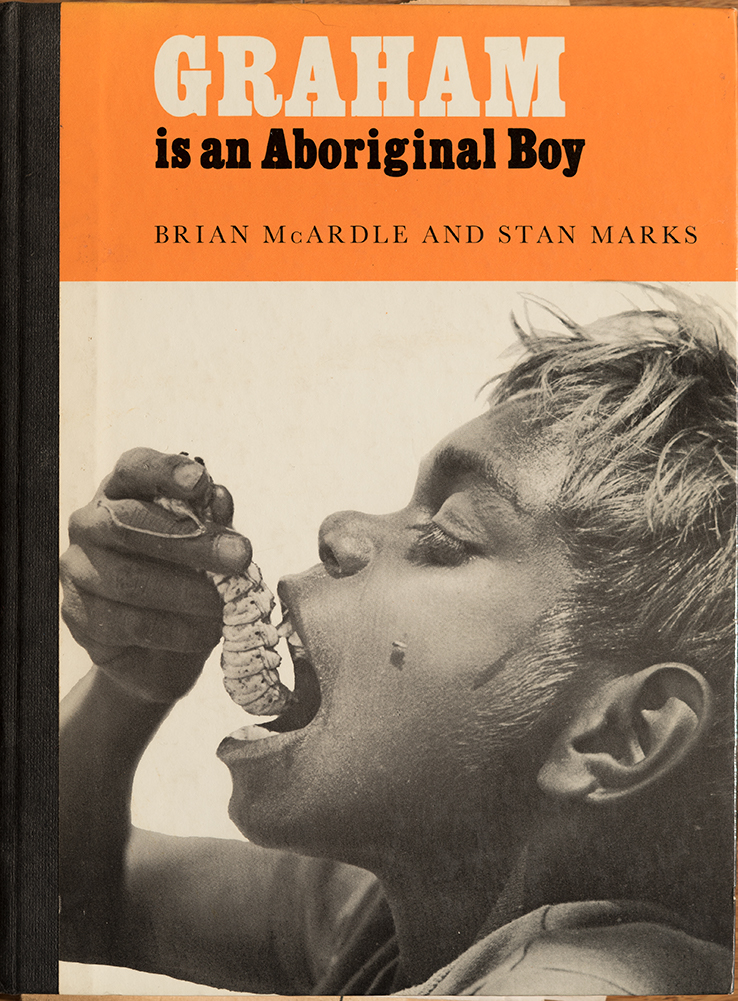
Richard Woldendorp in a 2011 interview with John Bannister in the Battye Library remembers Brian’s assistance; “I had some connection in the eastern states with … magazines, [with] Brian McArdle [who] introduced me to some photographers who were doing […] photojournalistic work as it was known in those days […] amateurs as well as professionals pursuing the sort of exhibition work that was popular overseas— [like] The Family of Man.
 He is talking about Group M and its series of shows between 1961-64 at Heidi owner John Reed’s gallery the Museum of Modern Art Australia. Given the rarity of photography exhibitions in art galleries at the time, this marks the beginning in Australia of such acceptance. Brian exhibited with them alongside Le Guay, Dupain, Moore, Sievers and Strizic. Early photographs by Brian show Mirka Mora exhibiting there, and John Perceval and Laurence Hope deep in conversation.
He is talking about Group M and its series of shows between 1961-64 at Heidi owner John Reed’s gallery the Museum of Modern Art Australia. Given the rarity of photography exhibitions in art galleries at the time, this marks the beginning in Australia of such acceptance. Brian exhibited with them alongside Le Guay, Dupain, Moore, Sievers and Strizic. Early photographs by Brian show Mirka Mora exhibiting there, and John Perceval and Laurence Hope deep in conversation.


Editorship opened a world of social contacts with writers and photographers primarily, but also artists, gallery directors, musicians, politicians and the vice-regal, scientists and indigenous leaders, amongst the many quotidian subjects of Brian’s own photographs.





On Sunday, 28 May 1961, Georges and Mirka Mora, Albert Tucker, Laurence Hope joined Brian at home in Beaumaris for his birthday, during which he recorded this tableau performed by Mirka, who growing tired of the male banter, decided to liven things up by pretending to fall out of the window, and feigning desolation at the lack of rescuers.




Ominously Brian wrote in The Age 23 December 1952, on “Facts on Television in Australia” after interviewing Dr. Mildred Horton, eminent American educationist, who defended television, describing it as “one of the most exhilarating media of communication yet discovered [and] convinced that television will have a most terrific impact on our lives by bringing the world to our living-rooms.” She was responding to “dire forebodings regarding the effect of television on the Australian community.” The Postmaster-General (Mr. Anthony) told Brian that “people who will buy the sets and, provide the audiences have heard little of the new entertainment which has gripped the imagination of people In Britain and America.”
By 1970 a simple black-and-white television set might cost $205, equivalent to a value of $2,500 today and even to rent, in the mid-60s they cost the 2022 equivalent of $15 p/w. Subscriptions to magazines were no doubt sacrificed to their purchase or hire. When on March 1st, 1975 colour television transmissions began in Australia buying a colour TV set you back around $1000 – $1300 in the 70s, which is equivalent to $8250 – $10,700 in today’s prices. The economics worked against magazines.
Walkabout (1934-1974) outlived LIFE (1936-1972). However Brian did not outlive his magazine. Photographing for “Graham” in Alice Springs may have revived memories of his war training there and in the Northern Territory before being wounded in New Guinea. His drinking increased and he departed ANTA under a cloud. His last transparencies date from 1968, and his last black and white roll was shot in St John of God where he was treated for his alcoholism.

Nevertheless, he was recognised as “an outstanding editor” by his colleague Peter Fenton who praised his contribution to the modernisation of the magazine:
“he smoothed its painless transition from the statically geographic and predominantly rural ambit of early and mid-twentieth century towards the all-embracing modernity of the ’sixties. With his sharp sense of magazine journalism he saw Walkabout’s function as mirroring the background and impetus of a changing Australia that embraced both rural and urban life. But he never forgot or ignored Walkabout’s 35-year tradition of concern for indigenous things—and people—and for authoritative fact […] Brian knew a good story when he saw one, and rejoiced in a well-turned phrase; as a photo-journalist of considerable reputation, he had an expert eye for the sort of picture that has so often evoked discerning readers’ praise. A friendly soul, with a penetratingly dry sense of humour that, in later years, gentled, Brian would take more than ordinary pains to brief a contributor on how to improve a submitted story, without raising the writer’s hackles; instead, sending him beaming away to have another go; and this, perhaps after a trying day of almost endless callers, showers of printers’ galley proofs accompanied by urgent reminders of deadlines, and before taking home a regular bag of work to pore over. His homework was almost a measure of his dedication to Walkabout; he sat up all night doing the layout of the 1968 Christmas number—his last.”
1967 was the year of the referendum in which on 27 May Australians voted to change the Constitution so that like all other Australians, Aboriginal and Torres Strait Islander peoples would be counted as part of the population and the Commonwealth would be able to make laws for them. A resounding 90.77 per cent said ‘Yes’ and every single state and territory had a majority result for the ‘Yes’ vote.
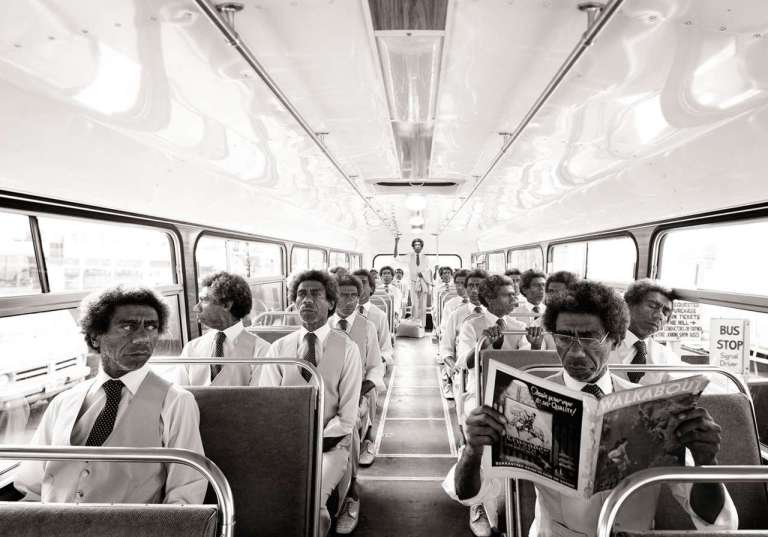
The word ‘walkabout’ is loaded with a discredited perception of Australia’s first civilisations, that they were feckless nomads. Even in the 1970s it was not a word to celebrate as Walkabout magazine did when it set out in 1934.
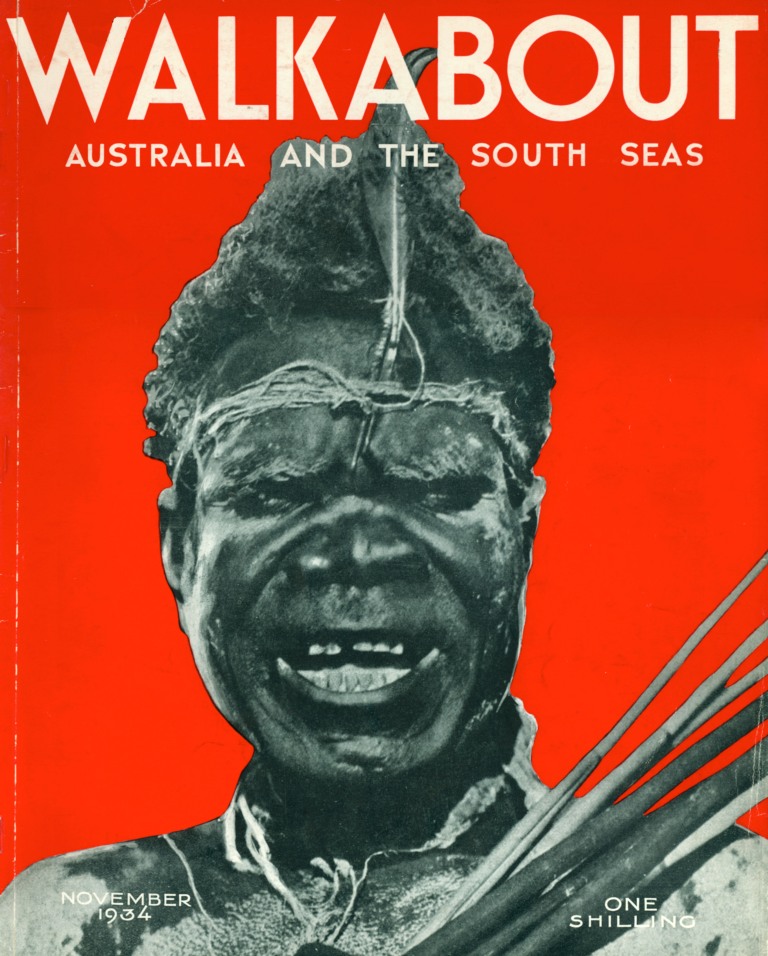
Postscript:
David Beal, after producing a children’s book series “I Want to Be…” with his wife Dawn, set up Audience Motivation in the 1970s
Richard Woldendorp went on to concentrate on aerial photography and established the first picture agency in Western Australia; Photo Index.
David Moore in the 1970s became an influential figure in advocating for the acceptance of photography as a legitimate art form, exhibiting his own work and with Wesley Stacey was a founder of the Australian Centre for Photography in Sydney
In mid-2020 the German company Bauer Media, at a massive loss compared to the $525 million initially paid, sold Woman’s Day, New Idea and and Marie Claire with other Australian magazines to a private investment firm, Mercury Capital due to falling advertising revenue.
In a Creative Commons survey, 84% of respondents agreed that disinformation – deliberately misleading or biased information; manipulated narrative or facts; propaganda – is affecting quality and accessible journalism. (85% said the same of misinformation – false information that is spread, regardless of intent to mislead).
74% of photojournalists said they have personally encountered barriers to providing quality and accessible journalism.
56% said their audience has lost trust in all or most media due to misinformation/disinformation campaigns.










Really valuable historical coverage and comment, as usual, thanks James
LikeLiked by 1 person
Thank you John!
LikeLike
Fabulous article James, I thoroughly enjoyed it. I still have a copy of Walkabout, one where my uncle had an article published about indigenous tool making, his name was Frank Few, and he did a TV series called Alcheringa, filmed on his property at Kallista. He worked with Bill Onus and the series featured tool making.
LikeLiked by 1 person
This and your other are such wonderful sites. It must be a colossal amount of work. Thank you!
LikeLike